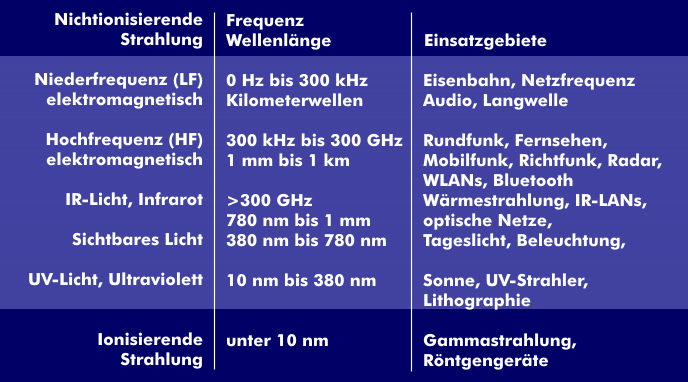non-ionizing radiation (NIR)
Non-ionizing radiation(NIR) is electromagnetic radiation that does not have sufficient energy to remove electrons from the outer shell of atoms. Depending on the wavelength, non-ionizing radiation is divided into ultraviolet light( UV), visible light, infrared light( IR), microwaves, high frequency( HF) and low frequency( LF).
The classification of non-ionizing radiation according to wavelength and frequency shows that the human body is exposed to non-ionizing radiation in many ways in everyday life, caused for example by electrical and electronic devices as well as high- voltage power lines, mobile phone networks, WLANs and railroads. The human body acts like an antenna in this respect. Due to the body's own ions, the human body becomes conductive when exposed to alternating electromagnetic fields. The effects on the human body are described under the term electrosmog.
The Ordinance on Protection against Non-Ionizing Radiation (NISV) is based on the recommendations of the International Commission for Non-Ionising Radiation Protection( ICNIRP) and the limit values set by it: the immission limit value and the installation limit value. The immission limit value, that is the hazard limit value, which protects against damage to health. This limit value includes all the radiation that is present at a location. And the plant limit value is a precautionary limit value defined in environmental protection.

